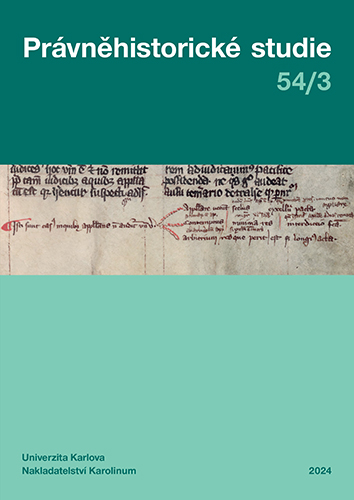Joseph II’s Reforms of the Piarist Order with Particular Regard to the Hungarian Province
Joseph II’s Reforms of the Piarist Order with Particular Regard to the Hungarian Province
Author(s): János BallaSubject(s): Law, Constitution, Jurisprudence, Cultural history, History of Church(es), History of Law, History of Education, 18th Century, Sociology of Education
Published by: Univerzita Karlova v Praze, Nakladatelství Karolinum
Keywords: state; church; enlightened absolutism; Joseph II; Piarist Order; religious; reform
Summary/Abstract: The aim of the study is to show the consequences for the Hungarian Piarist Order stemming from the ecclesiastical reforms of Joseph II. (r. 1765–1790). Both Maria Theresa (r. 1740–1780) and her son, Joseph II wanted to restructure and re-regulate the relationship between church and state. The wide-ranging reforms introduced during their reigns affected social, economic, cultural, judicial and legal life, as well as education. The Church and its different branches like the religious orders (ordo regularis) were the cohesive elements of this program: as a kind of supranational institution, it was the responsibility of the ecclesiastical administration to introduce, operate and control it. Without the state-church structure, the system as a whole would have remained dysfunctional. In fact, in relation to the objectives of Maria Theresa and Joseph II, we should not speak primarily of church reform, but of the modernization or centralization program of the multi-ethnic Habsburg monarchy. The Piarists are considered the most committed supporters of the 18th-century reform spirit, who, as a teaching order, also incorporated the new scientific achievements of the time into the education of the youth. The activities of the Piarists received great support from Maria Theresa and Joseph II, who entrusted them with the creation of many new educational institutions. Paradoxically, this relationship of trust almost led to the dissolution of the Order in the Josephine decade, when the Emperor sought to exploit the Piarists by dissolving the Order and employing its members in the state. This was ultimately hampered by scarce financial resources, but the existential fear of dissolution and the loosening of the order’s ties led many religious (lat. religiousus) to leave the community and continue their careers as diocesan priests or lay teachers.
Journal: Právněhistorické studie
- Issue Year: 54/2024
- Issue No: 3
- Page Range: 77-91
- Page Count: 15
- Language: English

